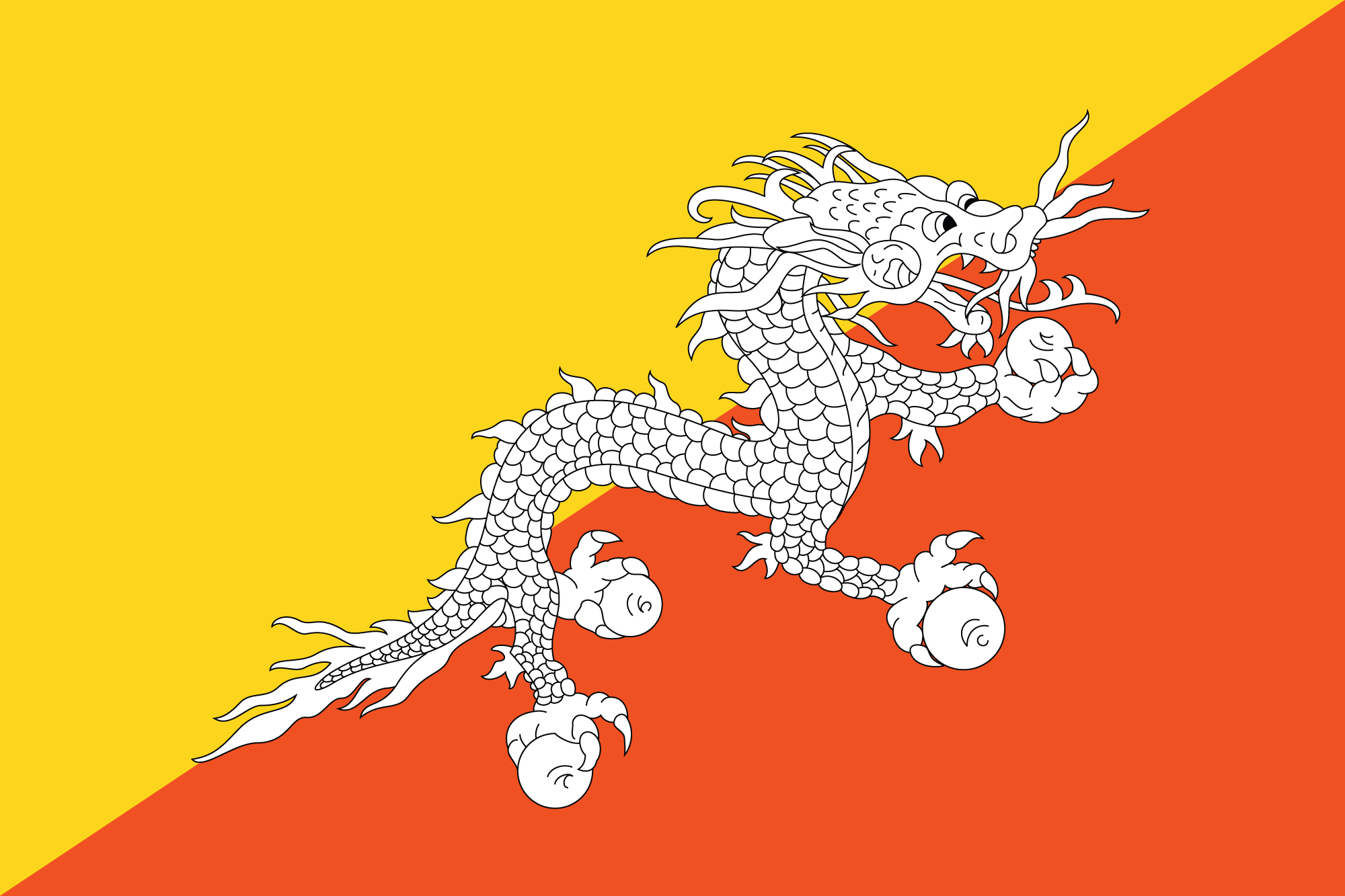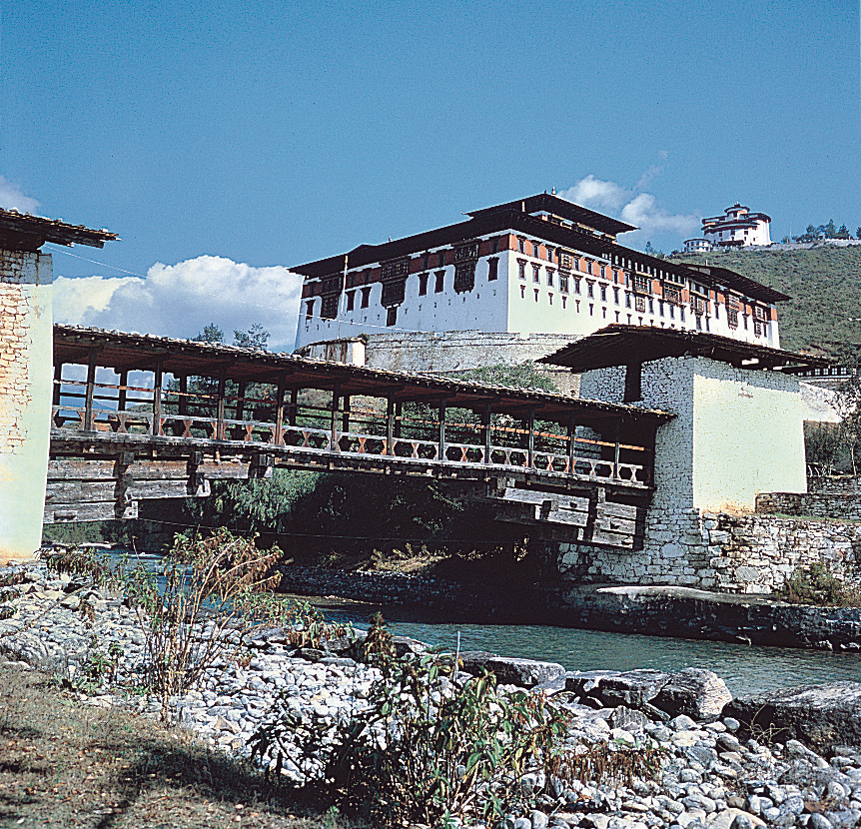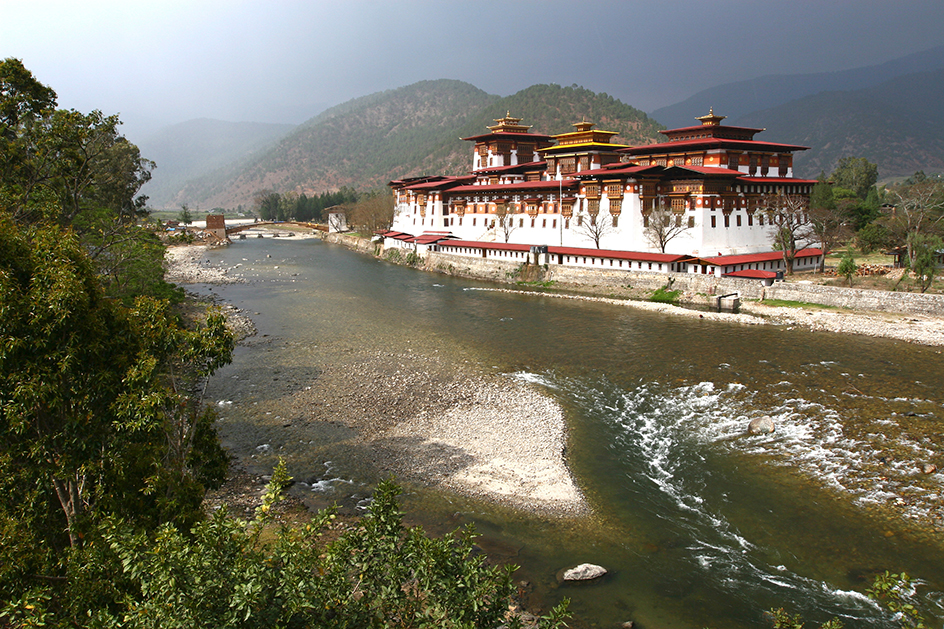Bhutan, << boo TAHN, >> is a small, developing independent country in south-central Asia. It lies in the eastern Himalaya between India and Tibet.

Bhutan is a rugged, mountainous country with great extremes in climate. Thick forests grow on the rain-drenched southern slopes of the mountains. It is extremely hot in the low foothill regions and extremely cold in the Great Himalaya. Only in the mid-Himalaya regions is the climate moderate. Almost all Bhutanese are hardy mountaineers who farm and raise stock. They live in isolated valleys, cut off from one another by mountains. Bhutan had little contact with the rest of the world until the late 1950’s. Thimphu, a town of about 100,000, is the capital of the country.
Government.
Bhutan is a constitutional monarchy. It had traditionally been a hereditary (inherited) monarchy, but in 2008, a new constitution made the country’s government more democratic. That year, the country formed its first parliament. The Parliament consists of two houses: the National Council and the National Assembly. The members of the National Council serve five-year terms. The people elect most members, but the king also nominates a few. The people elect the members of the National Assembly to five-year terms. The Parliament nominates the leader of the majority party as prime minister. The king is the head of state, and the prime minister is the head of government.
Bhutan has 20 administrative districts, called dzongkhags. Each district is governed by a district council.

People.
Bhutan’s two largest ethnic groups, the Sharchops and the Ngalops, make up more than half of the population. The Ngalops are descendants of Tibetan settlers. The Sharchops’ origin is uncertain, but they may have come from Tibet long ago. The two groups are sometimes known together as the Bhotes or Bhutias. About a fourth of Bhutan’s people are Nepalese. Several languages are spoken in Bhutan. Dzongkha, a Tibetan dialect, is the official language.
The Sharchops and the Ngalops practice Buddhism, Bhutan’s official religion. About 4,500 lamas (monks) in Bhutan belong to the Red Hat Order of Lamas. They perform Buddhist rituals, treat illnesses, and teach sacred doctrine. They live in fortified monasteries called dzongs, which have chapels, offices, and teaching centers. Most of Bhutan’s Nepalese practice Hinduism. 
Bhutan’s Hindus live in compact villages along the Indian border. They build rectangular houses of mud blocks and stones. They build on high ground for protection against floods, wild animals, and snakes. People in the small villages of the mid-Himalaya valleys live in houses of oblong stone blocks that have pine-shingle roofs. The family lives upstairs and uses the ground floor as a barn. In the high, northern mountain valleys, people live in small villages surrounded by stone walls. People of Tibetan descent wear a long, loose coat made from a colored blanket. This style of coat is gathered around the waist and hangs to the knees.
About one-third of Bhutan’s adult population cannot read and write.
Land.
Bhutan has three major land regions. A region of plains and river valleys lies along the Indian border in the south. It ranges from about 150 to 3,000 feet (46 to 910 meters) above sea level. Bananas, citrus fruits, and rice are grown in its hot, humid climate.

Mountains in the mid-Himalayan region, which is located north of the plains, rise to from 5,000 to 14,000 feet (1,500 to 4,270 meters) above sea level. Ash, oak, poplar, and willow trees grow in this region’s moderate climate. Mountains in the Great Himalaya, the northernmost region, rise over 24,000 feet (7,320 meters). The climate above 14,000 feet (4,270 meters) is very cold. Snow and glaciers cover parts of this region all year. Rivers run from north to south, forming fertile valleys.
Economy.
Bhutan is a developing country. Agriculture accounts for much of Bhutan’s economic production. Most farmers plant crops in fertile valleys or on irrigated terraces on mountain slopes. Corn, oranges, potatoes, and rice are among the leading crops. People in the high mountain areas herd cattle and yaks.
Construction and tourism are important economic activities in Bhutan. Industry plays a small role in the country’s economy. Bhutan produces cement, food products, and wood products. It mines coal, dolomite, and limestone. Bhutan exports hydroelectric power, metals, and timber. It imports fuels and lubricants, grains, machinery, and vehicles. Bhutan chiefly trades with India.
History.
Little is known of Bhutan’s early history. In the 800’s, Tibetan invaders conquered the Bhutia Tephoo—the country’s original inhabitants—and settled Bhutan. By the early 1500’s, descendants of the Tibetan invaders controlled Bhutan from a number of large dzongs located in the mid-Himalayan region. In the early 1600’s, Bhutan became a separate state when a Tibetan lama took power as ruler of both religious and state affairs. In 1907, Ugyen Wangchuck, a powerful penlop (territorial lord), was chosen to administer the government. He made himself Bhutan’s first king and gave the country its first effective central government.
In the 1700’s and 1800’s, the Bhutanese raided Sikkim and part of what was then British India. These raids caused the United Kingdom to take control of some of Bhutan’s foreign affairs. In 1910, the British Indian government took full control of Bhutanese foreign relations, but the British did not interfere with Bhutan’s internal government. In 1949, India agreed to handle Bhutan’s foreign affairs and to help develop its economy. India later assumed responsibility for the defense of Bhutan.
Bhutan remained isolated from the rest of the world until 1959, when China claimed part of the country. Bhutan then strengthened its ties to India and began programs to modernize its economy, educational system, and public health facilities. In 1972, King Jigme Dorji Wangchuck died and was succeeded by his son, Jigme Singye Wangchuck. In the early 1990’s, antigovernment protests by people of Nepalese descent turned violent. About 100,000 Nepalese fled to refugee camps in Nepal. In the following decades, most of the refugees were resettled in the United States and other countries around the world. Several thousand, however, remained in the refugee camps.
In the early 2000’s, the king began to move the country to a constitutional monarchy. In 2005, he unveiled a proposed constitution aimed at making the government more democratic. In 2006, the king gave up the throne to his son Jigme Khesar Namgyel Wangchuck. In 2007, Bhutan and India signed a revised version of their 1949 agreement. The revised agreement gives Bhutan more control over its foreign policy and military. In late 2007 and early 2008, Bhutan held the first elections in its history. Voters elected a new parliament. The country officially became a constitutional monarchy in 2008, when the king and Parliament approved the new constitution.
See also Lamaism; Sikkim; Thimphu; Wangchuck, Jigme Singye.
